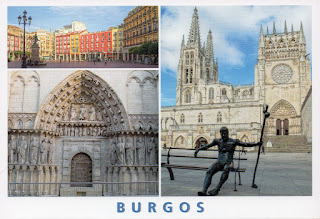So far, I've already visited UNESCO sites in Portugal, Spain, France, Italy and Switzerland. I think sooner or later I'll visit one in Germany, unless I leave Switzerland sooner than I expect. I just don't know which one will be... Maybe this one!
 |
| Bamberg |
This postcard was sent by Michèle
Bamberg is located in southern Germany in the north of Bavaria. It is a good example of a central European town with a basically early medieval plan and many surviving ecclesiastical and secular buildings of the medieval period. When Henry II, Duke of Bavaria, became King of Germany in 1007 he made Bamberg the seat of a bishopric, intended to become a 'second Rome'. Of particular interest is the way in which the present town illustrates the link between agriculture (market gardens and vineyards) and the urban distribution centre.
From the 10th century onwards, Bamberg became an important link with the Slav peoples, especially those of Poland and Pomerania. During its period of greatest prosperity, from the 12th century onwards, the architecture of this town strongly influenced northern Germany and Hungary. In the late 18th century Bamberg was the centre of the Enlightenment in southern Germany, with eminent philosophers and writers such as Georg Wilhelm Friedrich Hegel and E.T.A. Hoffmann living there. - in: http://whc.unesco.org/en/list/624































